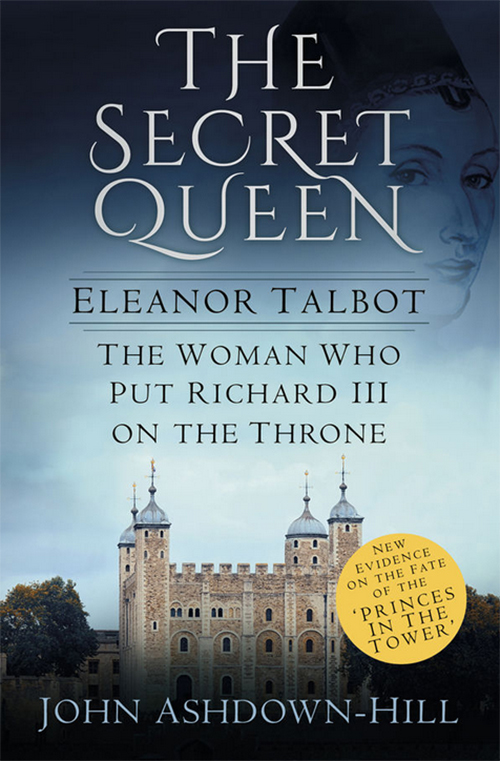The Secret Queen
Book Review

Eleanor Talbot The Woman who put Richard III on the Throne
The Secret Queen. Eleanor Talbot The Woman who put Richard III on the Throne, John Ashdown-Hill, The History Press, Stroud, 2016, paper, £9.99 ISBN 9780750968461
This revised edition of a book first published in 2009 and reissued in 2010, with an advertising alert on the front cover promising ‘New Evidence on the Fate of the “Princes in the Tower” is testimony to the enduring appeal of their mysterious, tragic disappearance and the issue of Richard’s complicity in their murders. The new evidence uncovered relating to the identity of the ‘bones in the urn’ in Westminster Abbey, raising questions about their authenticity and royal identity, the author concludes, is now further undermined by the lack of congenitally missing teeth in the recently discovered skull of Richard III.
However, the main focus of the book is Eleanor Talbot, who is introduced in the opening sentence of the Introduction as ‘the rock upon which the royal house of York foundered’. ‘Unwittingly and surely, for her part, unintentionally, she brought about the downfall of the dynasty’ it argues. By bringing all the known facts into the light of day, it seeks to do what has never previously been done namely to reveal as far as is possible her historical significance, whilst acknowledging that unfortunately ‘a complete picture of Eleanor as a person will probably still fail to emerge’. Indeed, despite the book’s title which assigns Eleanor a royal title, the author admits that during her lifetime ‘she was never acknowledged as queen’. However, he argues that by explicitly recognising ‘the legitimacy of Eleanor’s marriage to Edward IV, while at the same time specifically denying the rank of queen to Elizabeth Woodville, parliamentary legislation of 1484 ‘implicitly accorded posthumous queenship to Eleanor’.
The book comes replete with a cluster of photographs, mainly in colour, of people and places associated with Eleanor; line drawings in the text; a detailed timeline; a summary of the documentary evidence; an exploration of representations of Eleanor in fiction and an evaluation of what constituted ‘ladyship’ in a fifteenth-century context. It remains the most comprehensive assessment of a neglected figure in Yorkist history who, if her marriage to Edward IV had been acknowledged in her lifetime, the author argues, ‘all subsequent history must have been different’ and ‘the despotic, paranoid, so-called Tudors would have remained unheard of’.

